Kate O'Malley explores one of the most beautiful and unspoiled areas in France, where she discovers castles, cave art, local markets, and medieval villages.
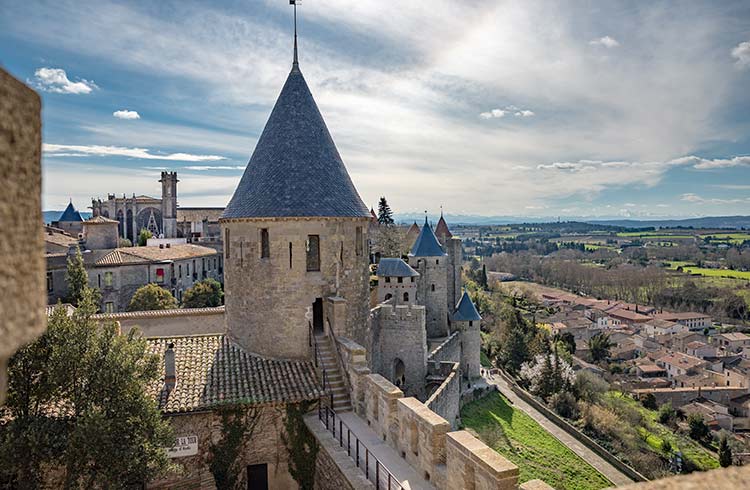 Photo © Kate O'Malley
Photo © Kate O'Malley
This isn't the first time I've been to the Midi-Pyrenees. My partner and I spent a few months housesitting here nearly two years ago. Affordable French skiing was the attraction then, but we quickly realized skiing is only the tip of the Midi-Pyrenees metaphorical iceberg.
So, we've returned to southwest France, one of France's most unspoiled regions, famed for its natural beauty, Cathar castles, and medieval fairytale villages, where the Pyrenees mountains form a natural border with Spain.
- Mirepoix
- Roquefort Les Cascades
- Carcassonne
- Hiking the Château de Roquefixade
- Cave of Niaux
- Llivia
- Trip Notes
Mirepoix
We base ourselves in medieval Mirepoix, a delightful ancient Bastide (fortified) town, where the central square is surrounded by brightly colored houses and quaint shops hidden beneath covered arcades.
Mirepoix has a long-standing association with some of France's most-loved culinary traditions. It is where the mirepoix (an aromatic French stock base of diced carrots, celery, and onion) originated in the 18th century.
On Monday mornings, the weekly outdoor market fills the central square, brimming with everything we love about France. True to the village's culinary origins, stalls overflow with local produce and regional delicacies, including a mind-boggling array of cheeses and homemade saucisson (sausage). It’s the perfect place to stock up on food for a picnic in the countryside.
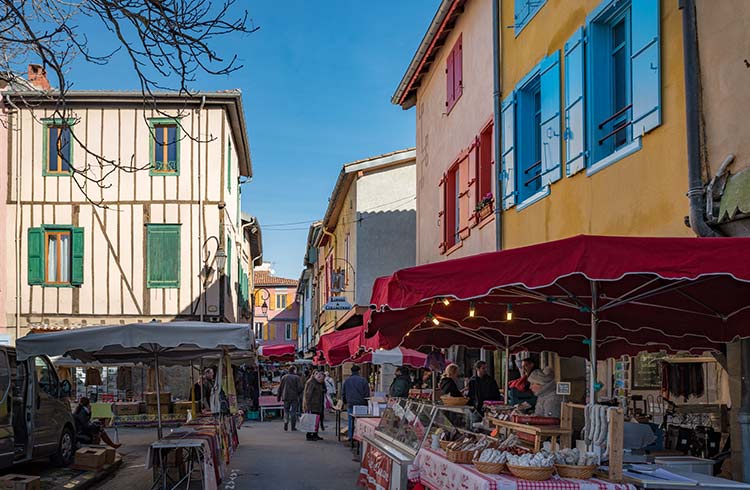
Roquefort Les Cascades
Roquefort Les Cascades is a perfect day trip destination for a picnic, a 30-minute drive from Mirepoix. Named after the local 98ft (30m) high waterfall, we had heard about this tiny village from a shop owner in Mirepoix.
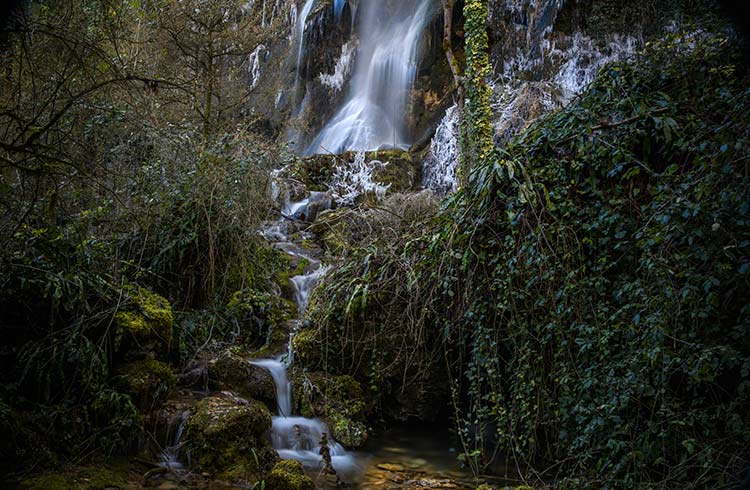
The water forms calcium deposits as it flows across the green, mossy rocks, creating a "tufa" waterfall, often described as a petrified waterfall.
It’s March, and an unseasonably late cold snap has left the falls partially frozen.
There’s a track which traces the waterfall to its source. The landscape at the top is far more beautiful than I had imagined. An enchanted forest of twisted trees forms a canopy over a series of crystal-clear streams. Part of me wishes we’d enjoyed our picnic up here by the stream, under the shade of moss-covered trees.
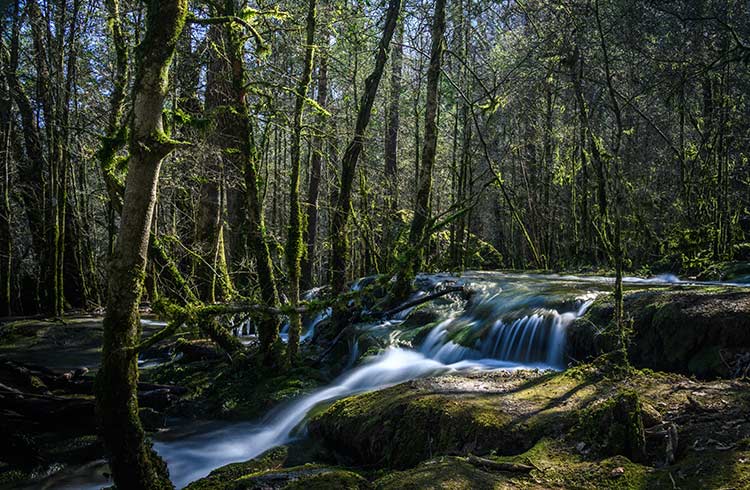
Carcassonne
Another great day trip is to France’s most celebrated and well-preserved medieval walled city, Carcassonne. In 1997, La Cité de Carcassonne was added to UNESCO's list of World Heritage Sites.
Less than an hour's drive from Mirepoix, the 1.9mi (3km) long, double-walled city, with its 52 watchtowers, have more than 2,500 years of history. In the 12th-century, La Cité de Carcassonne grew to become a critical French frontier between France and Spain during the Thirty Years War.
Under the rule of Napoleon, Carcassonne was demilitarized and the fortifications abandoned. The city fell into such decay, despite a government decree to demolish it, restoration of the fortifications began in 1853 by famed architect Eugène Viollet-le-Duc.
Regardless of criticism questioning the authenticity of Viollet-le-Duc's work, the restoration of Carcassonne is still considered a work of genius.
Walking across the imposing drawbridge and through the main city gates, the expansive walled city quickly closes in on us. The narrow medieval streets are buzzing with commerce, and we realize the 12th-century La Cité de Carcassonne is a living, breathing city.
Small lanes spill onto squares filled with outdoor cafes. Beyond the clusters of postcard racks and restaurants advertising lunch specials on cassoulet, there are boutique hotels and little apartments nestled in the corners of quiet squares where locals go about their business as the tour buses leave for the day.
Hiking the Château de Roquefixade
Clinging to the cliff above the tiny village of Roquefixade, the ruined Château de Roquefixade is a Cathar castle dating back to 1180 (the Cathar heresy was a 12th-century, Christian movement which rejected the Roman Catholic Church believing they were the only true Christians). This was a place of refuge for the Cathars during the time of the Crusades, a 20-year campaign initiated by Pope Innocent III to eliminate Catharism in southern France.
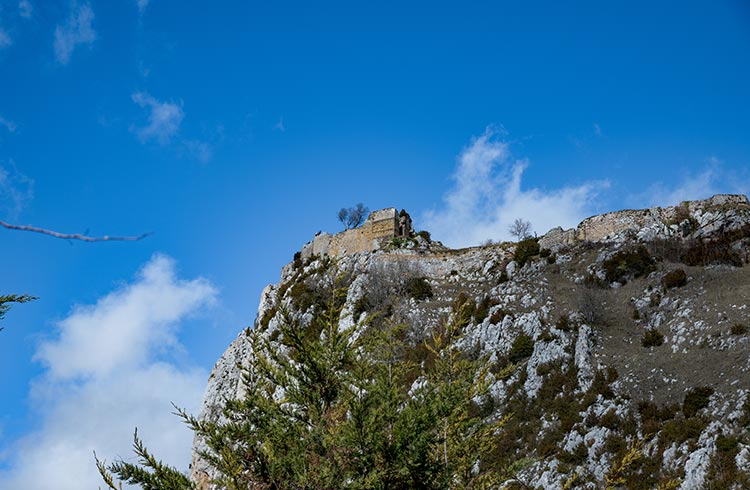
The hike to the ruin, a 1.5mi (2.5km) ascent, is not overly strenuous, although steep and uneven in parts. The only way to the top is by foot.
The castle ruins are barely holding together on their rocky perch, which has been exposed to the elements for centuries. Some of the structure is closed to the public due to its structural instability, but what remains tells of the imposing building that once stood there.
While the view of the castle is more impressive from below, the view of the Pyrenees from the ruins at 2,950ft (900m) above warrants the hike to the top. Of all the Cathar castles in the region, it’s from here you are most likely to enjoy the stunning 360° vistas of the Pyrenees on your own.
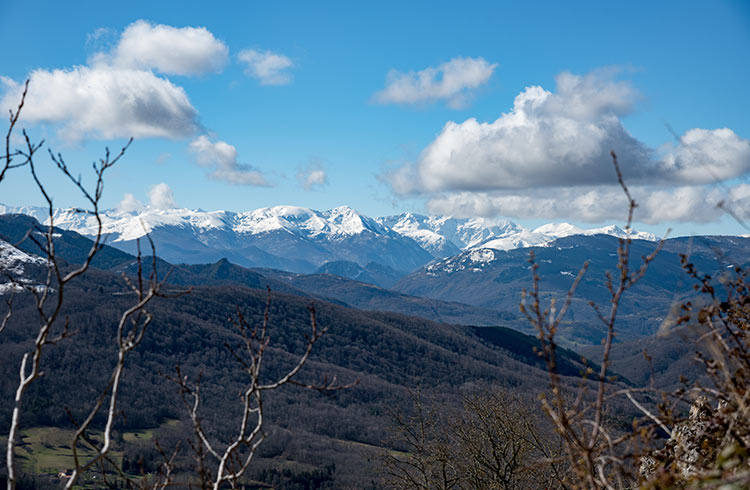
Cave of Niaux
The Midi-Pyrenees are home to the most prehistoric caves in France. The Cave of Niaux in the foothills of the Pyrenees contains some of the most impressive Paleolithic rock art in Europe.
The cave – one of few where prehistoric cave art can still be viewed by the public – can only be explored with a guide. Still in its original state to preserve the works of art, the cave is unlit (flashlights are provided), and there are no designated walkways.
We take a half mile (800m) walk over uneven ground into the cave by flashlight, before we reach the "Salon Noir," a dark cavern at the back of the cave. We are asked to turn our lights off to appreciate the cold, dark environment in the depths of the mountain.
Our guide's flashlight suddenly reveals a gallery of paintings dating back to the ice age, some 17,000 years ago. We see detailed depictions of bison, horses and deer on the walls, and also see a few examples of graffiti dating back to the 1600s.
Llivia
A local couple from Carcassonne told us about a small Spanish enclave surrounded by France. Less than two hours by car from Mirepoix near the border of Andorra, Llivia is separated from Spain by a 1mi (1.6km) corridor.
Much like Gibraltar, the Spanish town of Llivia is a cartographical anomaly, a legacy of the 1659 Treaty of the Pyrenees. Spain relinquished 33 villages in the north of Cerdanya to France. After signing the Treaty, Madrid deemed Llivia a town, not a village, and so Llivia never became part of the French Kingdom.
Visiting two countries in one day is a rare opportunity. Sitting in the town square of Llivia, we order vino tinto and tapas in our best attempt at the Spanish language; I marvel at how easily in Europe we can slip from one culture to the next. Only an hour ago, I was sipping a cafe au lait a few streets away in France, and now I am having lunch in Spain.
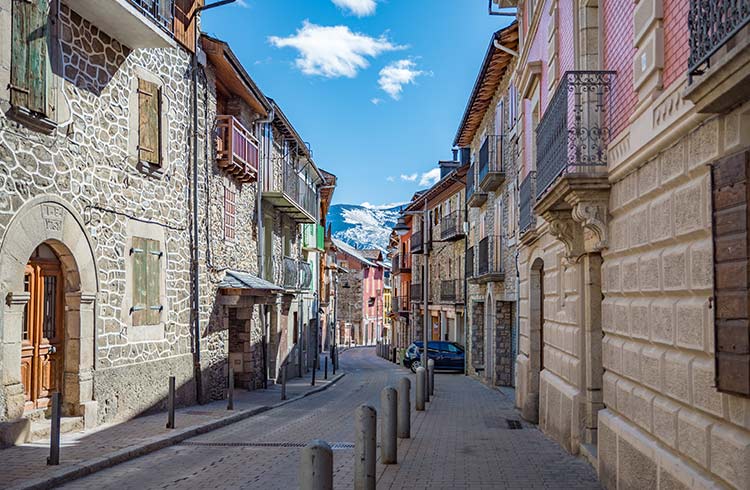
Trip Notes
What to Pack
The region is famous for its beautiful landscapes and outdoor activities. There are over 3,000mi (5,000km) of marked walking trails to be discovered. The Midi-Pyrenees are also renowned for its medieval towns and villages with narrow cobblestone streets, so a good pair of comfortable walking shoes or a pair of sturdy hiking boots are essential to exploring the area.
When to Go
The Midi-Pyrenees has a very comfortable climate with short winters and lots of sunshine year-round. Spring and early fall are great times to visit for the landscapes and agreeably warm temperatures.
The high summer months of July and August will be hot, and very busy.
Regardless of relatively mild winters, good snow can be found on the mountains from December–April. Both the Ariege and Hautes-Pyrénées departments are great bases for keen skiers and snowboarders.
How to Get There
There are regular trains from Paris to the capital of the Midi-Pyrenees – Toulouse. Toulouse has regional services throughout the Midi-Pyrenees as well as trains from Nice, Marseille, and Hendaye.
Expect it to take between four to six hours from Paris to Toulouse. Overnight sleeper trains are available.
There are international airports at Toulouse and Carcassonne.
Related articles
Simple and flexible travel insurance
You can buy at home or while traveling, and claim online from anywhere in the world. With 150+ adventure activities covered and 24/7 emergency assistance.
Get a quote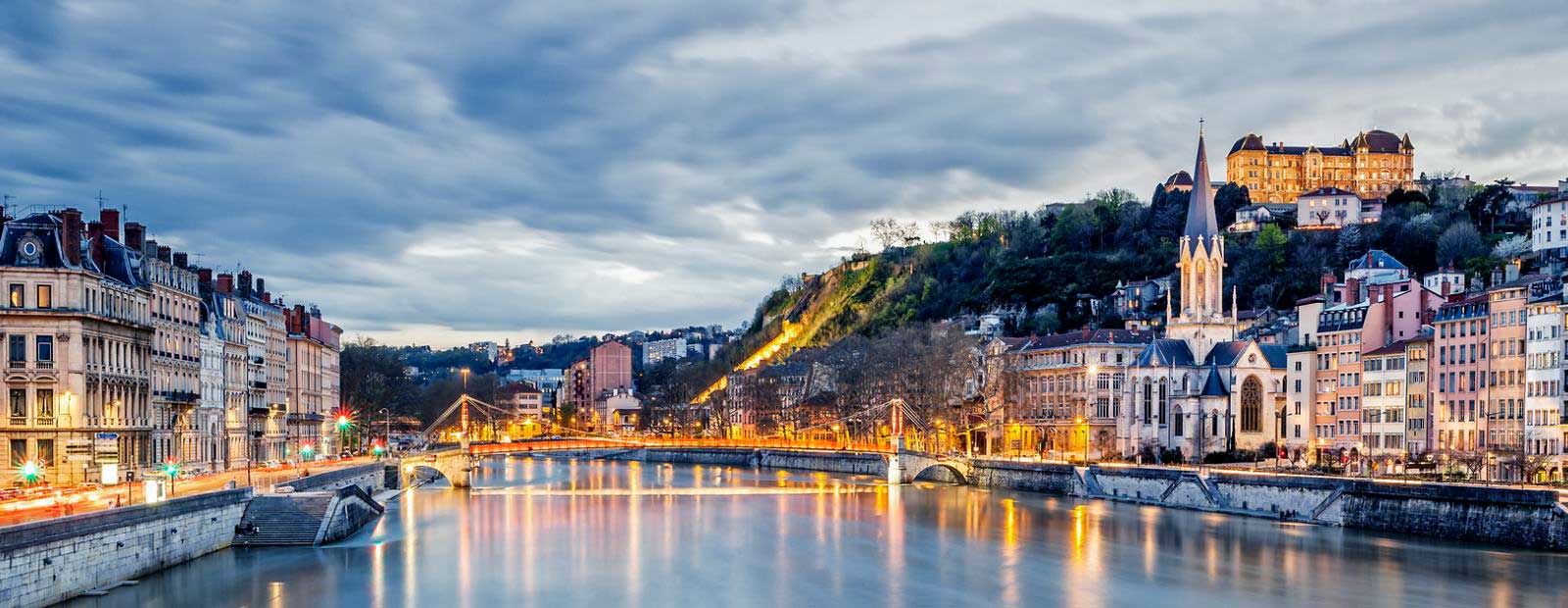
No Comments